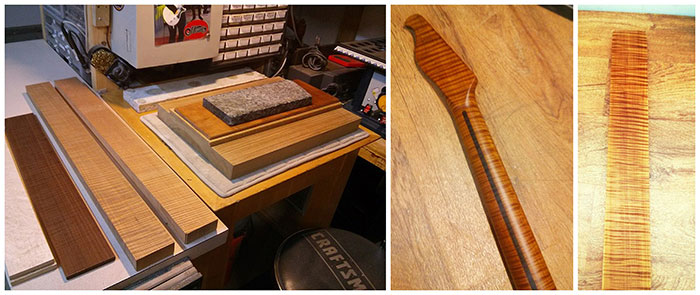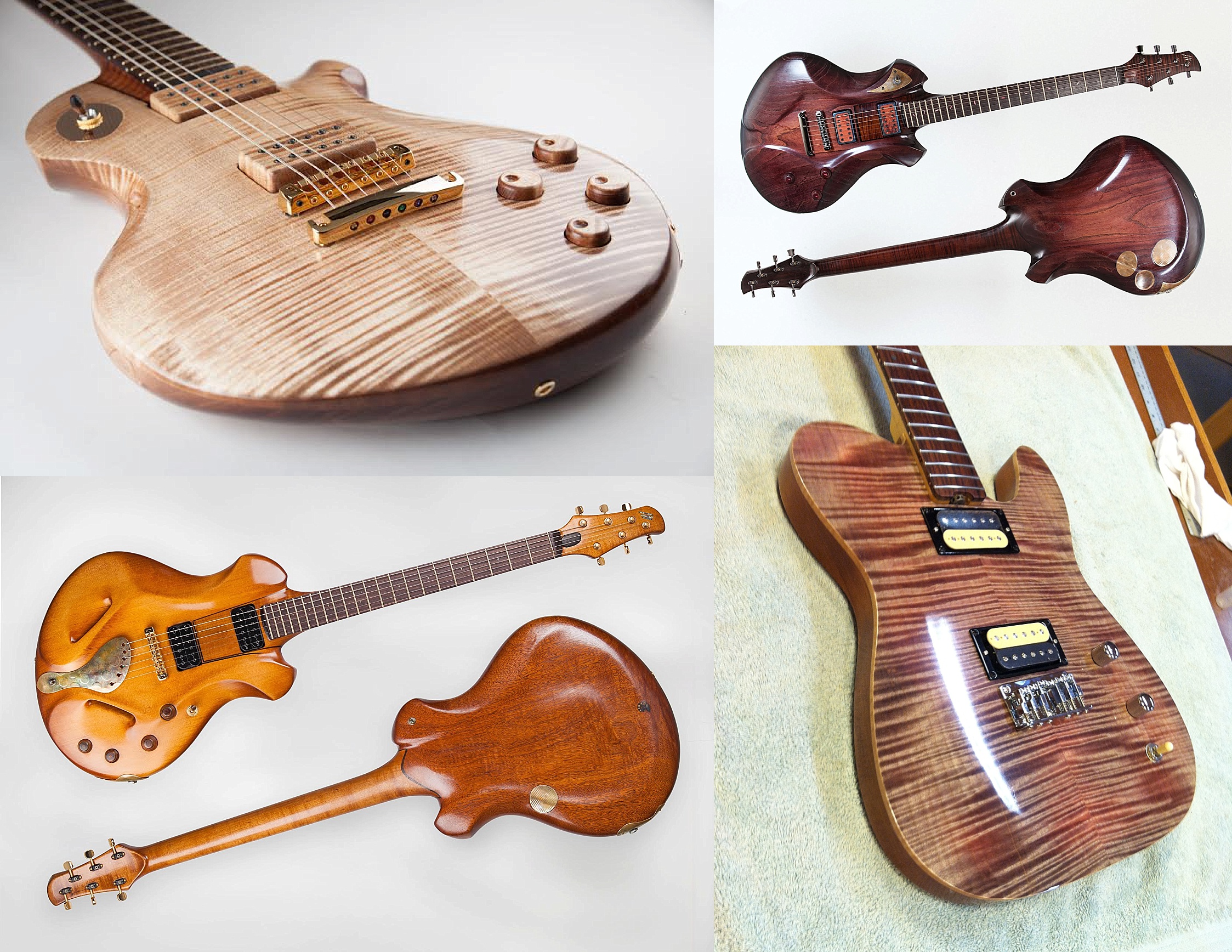Our music woods are roasted in specialized kilns resulting in wood with increased stability and less weight. Roasting brings out the figure in the wood throughout the entire piece, not just on the surface. This unique roasting or torrefication process is used to cure our lumber in a highly controlled, temperature process developed in Europe, and we are sending it to luthiers and craftsmen all over the world who build and design amazing instruments. Check out this video from one of our customers https://youtu.be/-pAuQThU4uc
The Process of Roasting
During the process, water, sugars, and resins are cooked off, leaving behind cellulose and lignum. Lignum is the glue that binds the cellulosic fibers together. Curing in this process increases the stability of the piece. Distribution of lignum is optimized and made consistent throughout the piece, resulting in greater stability of the wood.
Huge thanks for an incredible box of roasted (torrified) tonewoods for a very special build for a very special friend. Roasted to perfection to increase stability, reduce weight and maintain moisture content...amazing wood that instantly sounds 50 years old! Should mate nicely with some Burl Ancient Swamp Kauri I've been saving for this build. -Will Kelly
What Makes Roasting So Great?
Our clients love roasted wood for musical instrument design because it is naturally warp resistant, lighter in weight, and exhibits a clearer tone than wood that has not been roasted (in some instances).
- Adds dimensional stability and resistance to temperature and humidity changes.
- Hydroscopic cellulose is sealed and humidity does not change wood dimensionally resulting in in resistance to movement and warp.
- Roasted color is maintained throughout the wood without the use of stains or chemicals.
- Stiffness, strength, and the integrity of the wood are better maintained.
- Microstructure is similar to naturally aged woods.
- Hazardous chemicals are not used.
- In music woods customers indicate that roasted maple exhibits clearer tone and strength characteristics than regular maple.
Known downsides to roasting are
- Bending the ROASTED wood is not as easy as regular wood but is done by luthiers all over the world.
- Wood becomes just a bit more chippie to work with.
Here's one beautiful chunk of wood ...there is NO finish on this wood whatsoever. I actually polished it with ultra fine grit abrasive papers and thus is what the raw wood looks like now. Master Grade Roasted Curly Maple one piece neck with a Dark Roasted flamed Maple "skunk stripe" ..., this is being built by me for one of my favorite clients (and Artist!).


